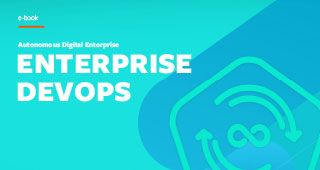Are you looking to improve your IT agility? Is scaling up your physical data center too slow and cumbersome?
A software defined data center (SDDC) might be what your company needs to accelerate your IT service delivery. SDDCs resemble traditional data centers, with some notable differences, particularly through their use of virtualization, abstraction, resource pooling, and automation.
In this article, we’ll cover these topics to help you determine whether you’re ready to transition to an SDDC:
- SDDCs
- Key components
- Benefits of SDDCs
- SDDC vendors
- How to switch to an SDDC
- Additional resources
(This article is part of our Data Center Operations Guide. Use the right-hand menu to navigate.)
What is an SDDC?
A traditional data center is a facility where organizational data, applications, networks, and infrastructure are centrally housed and accessed. It is the hub for IT operations and physical infrastructure equipment, including servers, storage devices, network equipment, and security devices. Traditional data centers can be hosted:
- On-premise
- With a managed service provider (MSP)
- In the cloud
In contrast, a software-defined data center is an IT-as-a-Service (ITaaS) platform that services an organization’s software, infrastructure, or platform needs. An SDDC can be housed on-premise, at an MSP, and in private, public, or hosted clouds. (For our purposes, we will discuss the benefits of hosting an SDDC in the cloud.) Like traditional data centers, SDDCs also host servers, storage devices, network equipment, and security devices.
Here’s where the differences come in.
Unlike traditional data centers, an SDDC uses a virtualized environment to deliver a programmatic approach to the functions of a traditional data center. Like server virtualization concepts used for years, SDDCs abstract, pool, and virtualize all data center services and resources in order to:
- Reduce costs
- Increase scalability
- Improve business agility
(Learn more about IT virtualization.)
You can manage SDDCs from any location, using remote APIs and Web browser interfaces. SDDCs also make extensive use of automation capabilities to:
- Reduce IT resource usage
- Provide automated deployment and management for many core functions
Key components of SDDCs
With the advent of hyperconverged infrastructure—where all IT infrastructure elements are software-defined and deployed—network technology has the power to support cloud SDDC and ITaaS initiatives.
SDDC host servers reside in the cloud, where you can create and configure your data centers to your needs, without having to physically configure or host network equipment. SDDCs rely heavily on virtualization technologies to abstract, pool, manage, and deploy data center functions.

Key SDDC architectural components include:
- Compute virtualization, where virtual machines (VMs)—including their operating systems, CPUs, memory, and software—reside on cloud servers. Compute virtualization allows users to create software implementations of computers that can be spun up or spun down as needed, decreasing provisioning time.
- Network virtualization, where the network infrastructure servicing your VMs can be provisioned without worrying about the underlying hardware. Network infrastructure needs—telecommunications, firewalls, subnets, routing, administration, DNS, etc.—are configured inside your cloud SDDC on the vendor’s abstracted hardware. No network hardware assembly is required.
- Storage virtualization, where disk storage is provisioned from the SDDC vendor’s storage pool. You get to choose your storage types, based on your needs and costs. You can quickly add storage to a VM when needed.
- Management and automation software. SDDCs use management and automation software to keep business critical functions working around the clock, reducing the need for IT manpower. Remote management and automation is delivered via a software platform accessible from any suitable location, via APIs or Web browser access.
You can also connect additional critical software to connect with and customize your SDDC platform. But, for companies just moving to an SDDC, your first goal is to get your basic operations software infrastructure ready for the transition. Customizing can come later.
Benefits of SDCCs
Many experts believe the inevitability of switching from a traditional data center to an SDDC is just around the corner, as platforms like IT-as-a-service emerge as the new normal.
As your organization transitions to an SDDC, you can expect to benefit in several major ways, including:
Business agility
An SDDC offers several benefits that improve business agility with a focus on three key areas:
- Balance
- Flexibility
- Adaptability
SDDCs increase business productivity by consolidating duplicate functions. This means that IT resources are freed up to spend their time solving other problems, resulting in greater agility.
Lastly, SDDCs help businesses increase their ROI so they have more funds to spend on long-term strategy and innovation.
Reduced cost
In general, it costs less to operate an SDDC than housing data in brick-and-mortar data centers. Traditional data centers must charge more to cover the cost of:
- Round-the-clock employees
- Security
- Operational needs like building leases and hardware
Organizations that house their data in-house require additional IT manpower, expensive equipment, time, and maintenance. Those that have not put much thought into data storage, for example, may suffer the possible costs of potential data breaches. An expensive hardware malfunction is yet another possibility that could cause loss of data.
Cloud SDDCs operate similarly to SaaS platforms that charge a recurring monthly cost. This is usually an affordable rate, making an SDDC accessible to all types of businesses, even those who may not have a big budget for technology spending.
Increased scalability
By design, cloud SDDCs can easily expand along with your business. Increasing your storage space or adding functions is usually as easy as contacting the data facility to get a revised monthly service quote.
This is a significant advantage over brick-and-mortar data centers, which scale only by making more room for additional servers, purchasing hardware and software, and bringing in manpower to make the transition. This clearly costs more and takes more time.
The appeal of outsourced data centers has always been that they ease the burden off your company’s shoulders, leaving your in-house IT team to focus on strategy. But SDDCs take this benefit a step further, offering potentially unlimited scalability.
SDDC vendors
SDDC hardware and services are sold by many different vendors, including:
- Dell/VMware
- Hewlett Packard Enterprise
- Microsoft
- Amazon
- Oracle
- Citrix
- IBM
- Business partners who help create and configure custom SDDCs
How to move to an SDCC
While SDDCs offer many benefits, not every organization is ready to make the transition. Here are some key considerations to determine whether your organization is ready.
Assess company culture
Collaboration is critical to the adoption of new technology. Is your company’s culture one of collaboration? Be honest.
It can be difficult for legacy businesses to transition to an SDDC without carefully considering long-term strategy and employee skillsets.
Pay attention to timing
For your organization, a complete traditional DC-to-SDDC migration could be years away. That does not mean that key stakeholders should not be considering it today. Leadership should evaluate solutions and start by transitioning software one piece at a time.
- Many organizations start utilizing SDDCs by migrating their Microsoft Exchange servers to Microsoft Azure servers, retaining their ability to control their Exchange setup while Microsoft’s SDDC handles the infrastructure setup.
- Other SDDC migration candidates might include file and print servers and other special purpose servers that do not need to run in an organizational data center.
Ultimately, CIOs and CTOs should implement a basic infrastructure of software that can link with an SDDC.
Understand the capabilities & limitations of your DevOps team
Adding a platform like SDDC requires a commitment from DevOps. Cloud SDDC migration requires fewer traditional IT operations skills focused on maintaining the infrastructure, and more DevOps skills focused on application delivery speed, product quality, and automation.
Cloud SDDCs reduce IT infrastructure and operations silos and increase the need for DevOps skills, including container and microservices management needed to run production workloads at scale. Before making this leap, assess whether:
- You have the right DevOps team in place.
- You will need to add additional employees—and determine which skills you need the most.
- You could outsource professional help for the implementation.
Plan ahead
If your organization has not aligned the above requisites, now may not be the best time to make the switch. Instead, start with these actions:
- Prepare your basic software infrastructure
- Bolster your DevOps team
- Pay attention to timing
CTOs should keep their focus on a long-term goal where they ultimately convert to an SDDC by the mid-2020s.
The outlook for SDDCs
SDDCs are not yet as commonplace in today’s digital economy, but technology trends suggest that they will be.
Until then, as more businesses virtualize automated IT functions, demand for both products like SDDCs and DevOps professionals who can code them will continue. SDDCs offer an innovative way to store data suitable for enterprise organizations interested in successfully using DevOps to advance digital transformation.







